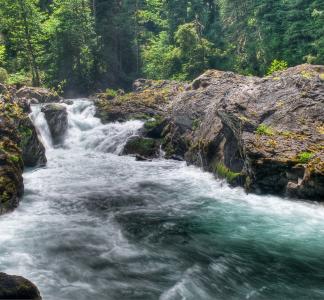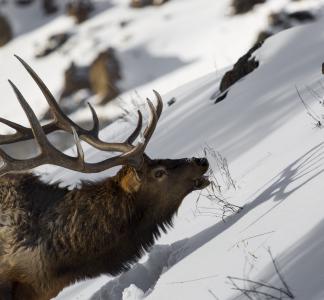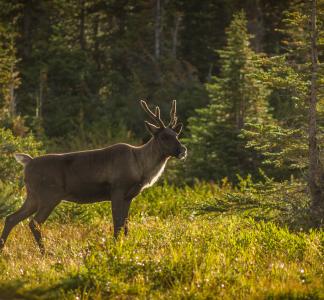What is the extinction crisis? 5 key facts
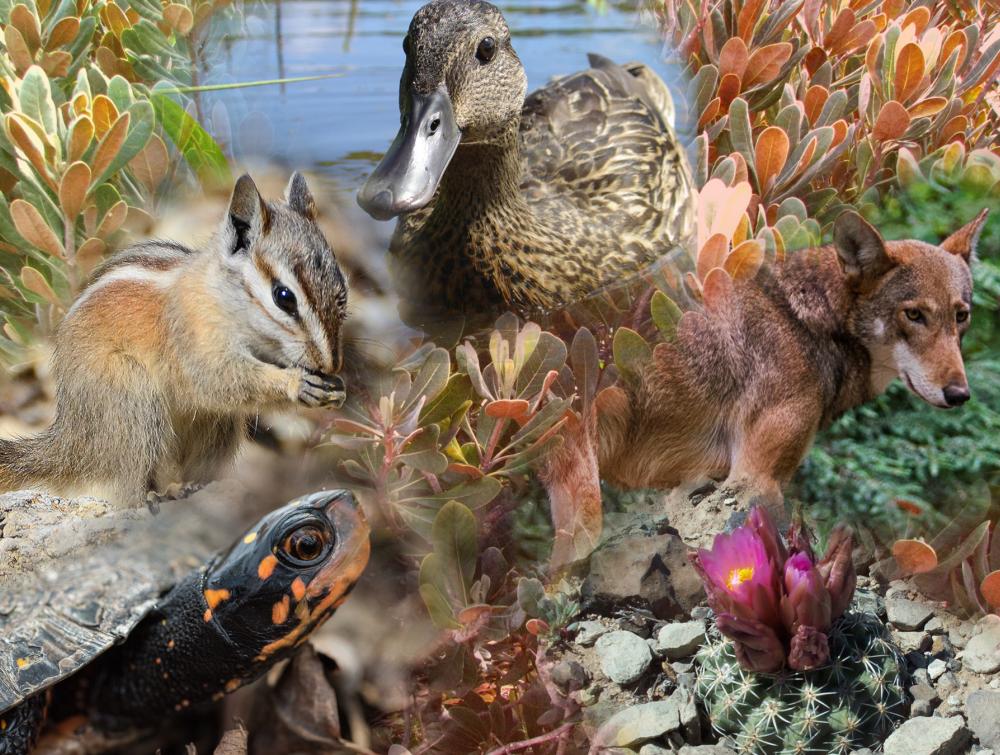
Species found in the U.S. that are listed as endangered or critically endangered by the IUCN
Photo credits in body
Climate change, other human causes drive 6th mass extinction
Photo collage image credits, clockwise from top-center: Hawaiian duck by Brenda Zaun, USFWS, Flickr; red wolf by Valerie Abbott, Flickr; pariette cactus by Tony Frates, Flickr; spotted turtle by Patrick Randall, Flickr; Palmer’s chipmunk by VJ Anderson, Wikimedia Commons; background- Hōʻawa by David Eickhoff, Wikimedia Commons
-
Humans are causing the extinction crisis
-
Species go extinct all the time. But not at this rate...
-
It’s not enough to save species—individual populations matter, too
-
Extinction causes chain reactions...including to people
-
Protecting lands and waters is a key tactic for stemming the extinction crisis
If you’re like most people, the word “extinction” evokes images of dinosaurs meeting their bitter, mysterious end some 65 million years ago.
You may also think of it as a one-of-a-kind event. But whatever killed the dinosaurs and other species at the end of the Cretaceous was actually the fifth mass extinction event in the Earth’s history. And it probably wasn’t the last: scientists generally agree that we’re now entering the sixth mass extinction. Species are fading away faster than nature would ordinarily dictate, amounting to what some experts have called a “biological annihilation” that will weaken not just ecosystems worldwide, but human civilization itself. That’s what we’re talking about when we mention the “extinction crisis.”
In addition to fighting climate change, scientists say we should protect 30% of lands and waters to help communities and species adapt
Unlike other mass extinctions, this one is being driven by human activity, ranging from the climate pollution we’re pumping into the atmosphere; to the growing footprint of industrial logging and mining; to the human-spurred spread of invasive species.
Just as we’re causing this crisis, it is incumbent on us to stop it. In addition to curbing climate change, scientists say we should be protecting a network of 30 percent of lands and waters to help communities and species adapt to threats and ensure access to clean air and water.
We’re looking at five key facts about the extinction crisis, what is causing it and how we can confront it.
1. Humans are causing the extinction crisis
Unlike the extinction of the dinosaurs, the mass die-out happening now wasn’t spurred by some natural phenomenon like an asteroid or volcanic eruption. In the words of ecologist Dr. Gerardo Ceballos, co-author of a key 2020 report: “it is entirely our fault[.]” That’s “our fault” as in humanity’s: this crisis is being driven by climate change, industrial-scale agriculture land-use, the spread of invasive species and diseases, pollution and numerous other factors directly caused by our behavior.
Unsurprisingly, the continued warming of the planet, chiefly caused by humans burning fossil fuels, is the big, bad multiplier effect both directly threatening populations and making all the other threats worse. High temperatures are a major factor in whether a species declines, and some experts have said failing to meet strong emissions-reduction goals could lead to “more than a third or even half of all animal and plant species” going extinct.
But climate change is helping push species to the brink in more oblique ways, too. One example is the infamous frog- and toad-killing chytrid fungus, which research suggests is aided by warmer conditions Infection with fungal disease could, in turn, make some species more susceptible to climate change effects.
2. Species go extinct all the time. But not at this rate...
Extinctions have happened throughout the history of the planet and will continue to happen no matter what we do. The normal“background” rate of extinction is something like one out of 10,000 species per 100 years, part of the ordinary evolutionary ebb and flow that sees new lifeforms flicker into existence as old ones are snuffed out.
But mass extinctions, when 75 percent of all species on Earth die out, are a different matter entirely. These dramatic events, like whatever took out T-rex and crew just before the dawn of the Paleogene period, are truly world-changing. And right now, many scientists say, we’re experiencing the sixth mass extinction in Earth’s history.
This chart from a 2011 study illustrates our dark “progress” toward that 75-percent threshold (represented by the thick black line at right). The black animal and plant icons represent the number of threatened species within each group globally, each bringing us closer to doom:
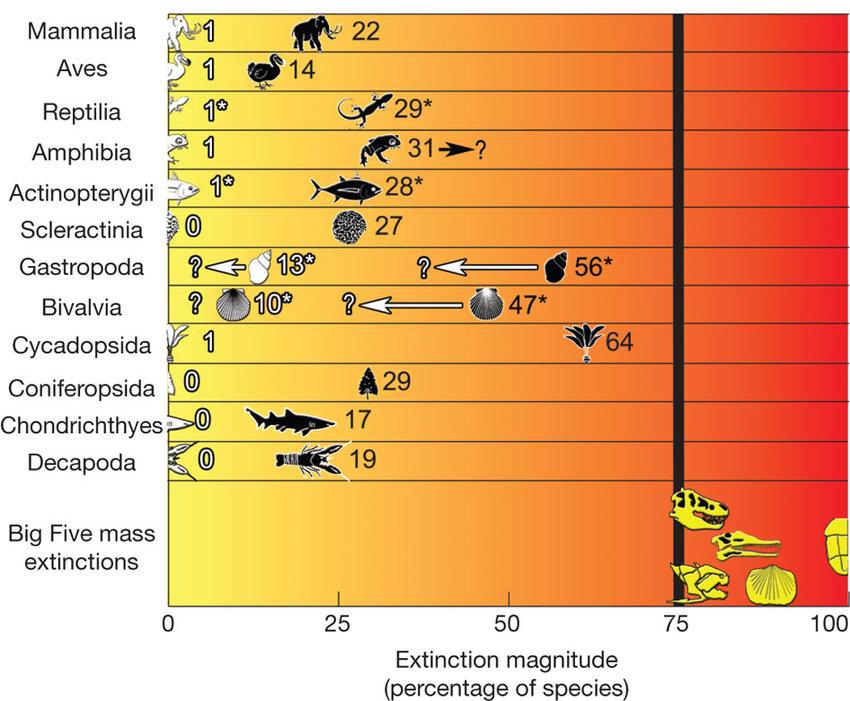
"Progress" of modern species taxa toward 75-percent "mass extinction" threshold
Barnosky et al., 2011, Nature
(White icons indicate species “extinct” over the past 500 years, asterisks indicate categories where relatively few species have been surveyed and arrows show where and in which direction extinction percentages may be skewed.)
It’s happening fast, too. A 2019 United Nations report found that about 1 million species face extinction in the coming decades, with recent years’ global rate of species extinction tens-to-hundreds of times higher than the expected rate:
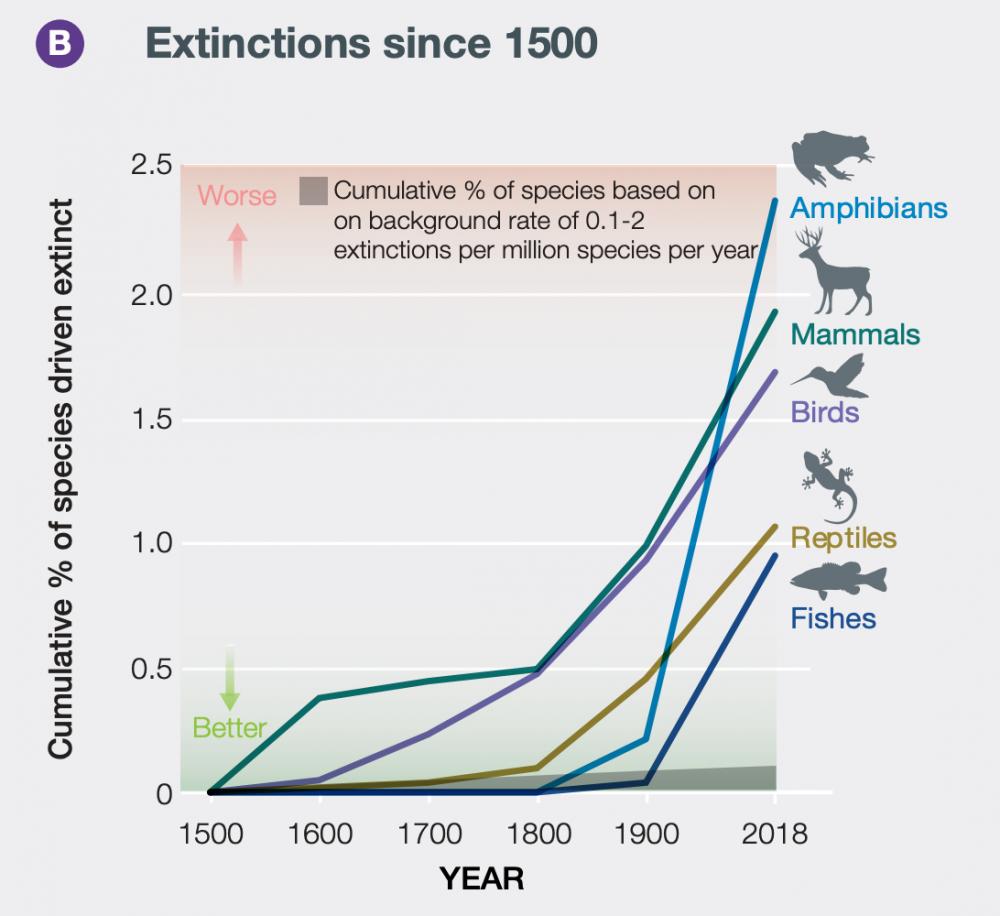
Extinctions since 1500 for vertebrate groups, measured by cumulative percentage of species driven extinct
IPBES, 2019
Research published in 2020 forecast that about 500 terrestrial vertebrate species will probably die out over the next two decades if nothing changes. Efforts to quantify extinctions and extinction-rate vary, but there is near-unanimous agreement that what’s happening now is a major uptick in species going extinct—well beyond what nature-as-usual would be able to compensate for.
3. It’s not enough to save species—individual populations matter, too
It’s pretty simple: Before a species disappears from the Earth, it disappears from the local meadow or forest or mountain range. As scientists have pointed out, those local-level losses are a big deal; so-called “population declines,” which are happening more frequently in recent years, cascade down through ecosystems and cause big disruptions (see no. 4 below). They’re also major indicators of larger trends—a precursor to extinction. So just because a species isn’t all-the-way-gone yet and there are still a few herds or flocks or groves left somewhere on Earth, doesn’t mean danger has passed. On the contrary, these population losses should be treated as blaring warning bells.
The chart below shows that large chunks of each continent (in blue or dark blue) have lost 50 percent or more of their populations of mammal species, illustrating “likely trends in population losses.” The pattern is clear, and we can’t wait any longer to act.
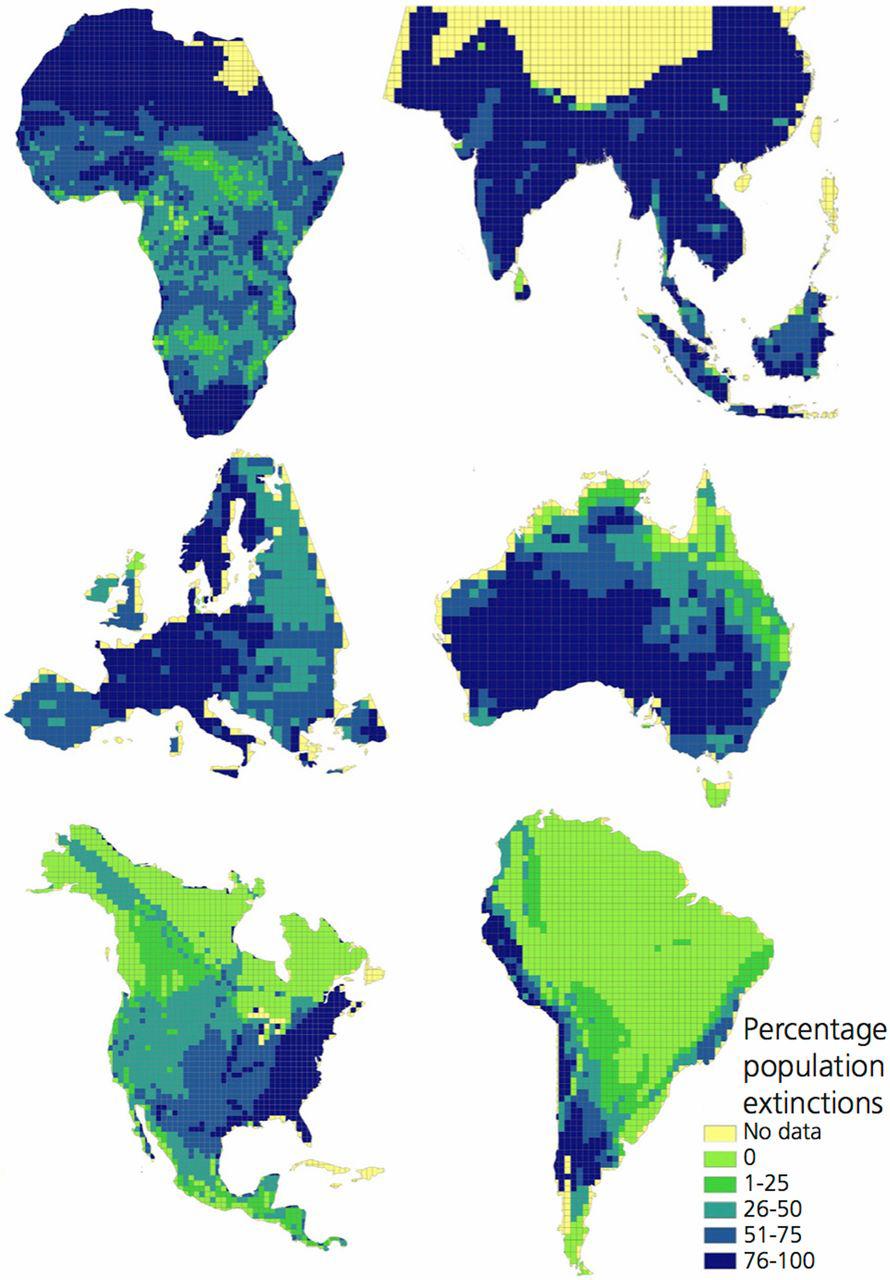
Percentage of local population extinction in select mammal species across continents, an indication of the severity of the mass extinction crisis
Ceballos et. al, 2017, PNAS
4. Extinction causes chain reactions...including to people
As the abovementioned 2020 “biological annihilation” study put it, “extinctions breed extinctions” and other environmental calamities. So that friend who shrugs at the prospect of an obscure freshwater mussel shuffling off this mortal coil isn’t only being flip—they're nearsighted in the extreme.
A species dying off also affects whatever species ate it, whatever predator ate that species, and so on—rippling outward along an intricate web of inter-species relationships that is the product of millions of years’ worth of evolution. That includes humans who may rely on the affected plants or animals for food and shelter. There’s no such thing as one extinction in a vacuum.
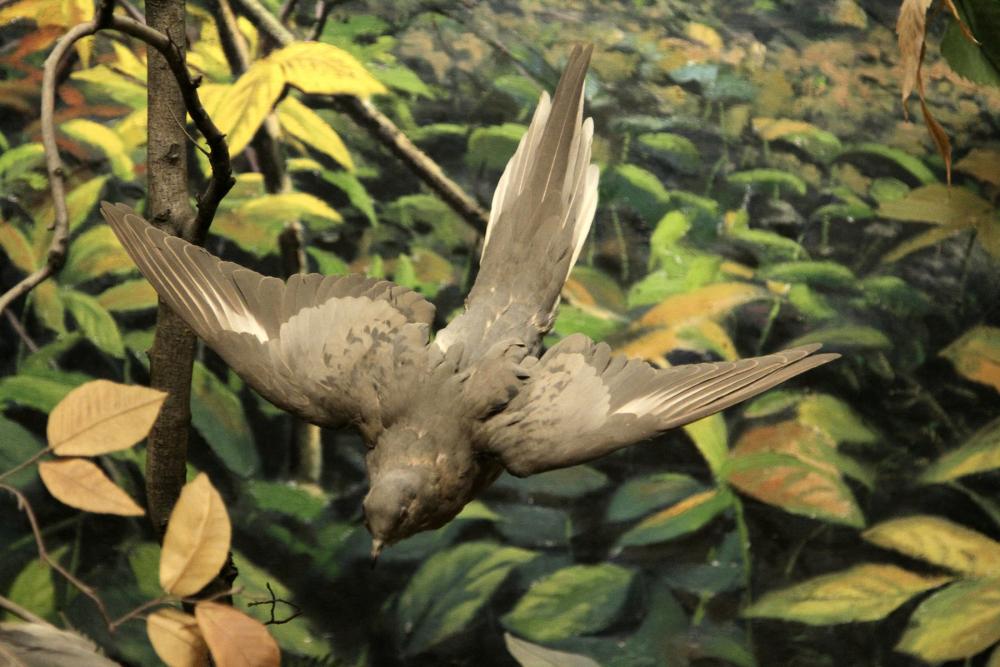
A museum display shows a passenger pigeon, now extinct, at the Academy of Natural Sciences of Drexel University
Jim Capaldi, Flickr
There are numerous illustrations of these chain-reactions. After passenger pigeons were hunted out of existence in the early 20th century, for example, populations of mice that had vied with the birds for food-seeds exploded—which led to a bumper crop of Lyme disease-ridden ticks.
A more modern example with clear practical applications: Pollinators like bees and butterflies are under pressure due to factors like habitat loss and use of pesticides. Unless we work to counter those threats, species extinctions will seriously jeopardize global crop production and the world food supply.
5. Protecting lands and waters is a key tactic for stemming the extinction crisis
The number-one cause of nature-loss identified in the seminal 2019 United Nations report (mentioned in no. 2 above) is "changes in land and sea use," primarily from large-scale agriculture, logging and runaway development. As a result of those and other threats, roughly 9 percent of all terrestrial species do not have enough habitat for long-term survival. Humans are pushing plants and animals to the brink by pushing them off the map; 75 percent of land environments and 66 percent of marine environments worldwide have already been “severely altered” by human actions.
Habitat loss is an especially big problem for species forced to migrate or adapt their behavior in a rapidly warming world. In 2016, scientists identified a recently extinct rodent as the first mammal ever to succumb directly to climate-change effects. The Bramble Cay melomys lived on a tiny atoll south of Papua New Guinea, and there was no way for it to escape rising sea-levels that eventually overwhelmed its habitat and food sources. Dr. Anthony Barnosky, co-author of the 2011 study mentioned in no. 2 above, cited this example of “the human-caused extinction process” as similar to events playing out around the world: “the barriers [facing species that try to flee climate change effects] are the 51 percent of the Earth’s land surface that has been taken over by people.” Thanks to us, there’s nowhere to run.
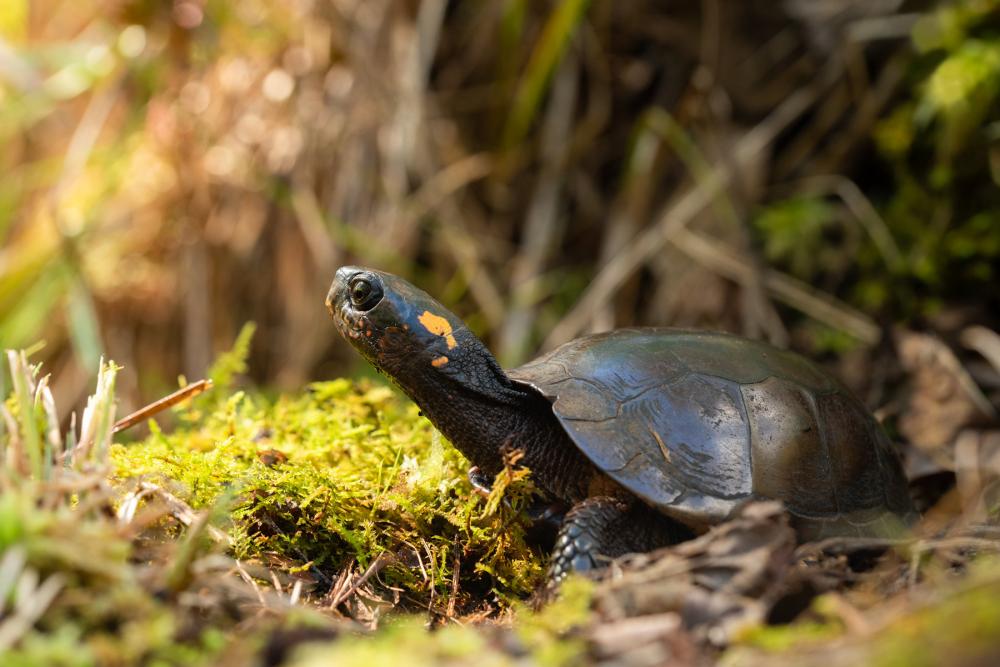
The bog turtle's habitat has been drastically reduced in the U.S., contributing to the IUCN categorizing it as critically endangered
Patrick Randall, Flickr
The situation may feel pretty hopeless, but we do already have some proven tactics for saving wildlife. Protecting lands and waters is one of the most important. In a study of global biodiversity data published in 2016, scientists found that there were 10.6 percent more species in protected areas than unprotected areas. And though human development eats up more habitat every day, there is still a lot of wild nature left to conserve: about 60 percent of the continental U.S. is still in a “natural” or wild state, according to 2019 findings. A study published in 2021 by Wilderness Society scientists found that at least 10 percent of suitable habitat for most land vertebrates (mammals, birds, amphibians and reptiles) could be conserved by protecting 30 percent of the continental U.S., paralleling a national conservation goal adopted by the Biden administration.
As climate change and other threats put more pressure on wild nature in the U.S. and worldwide, it is vitally important we secure a network of land and water that lets species adapt free of undue interference. The logical starting point for that project is the national parks, wilderness areas and other public lands we’ve already protected—hubs of a life-support system that will stand as a bulwark against extinction here and abroad.
